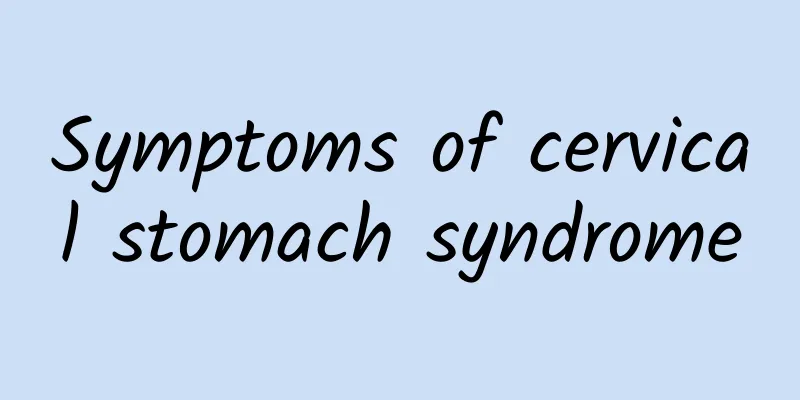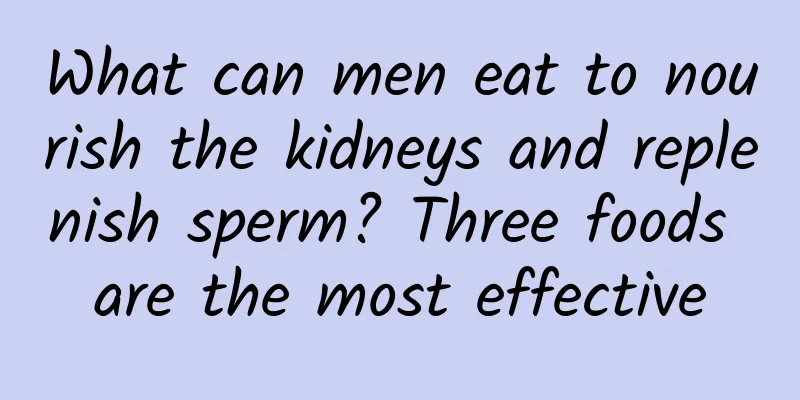Symptoms of cervical stomach syndrome

|
Many people don’t have a particularly good understanding of cervical-gastric syndrome. Cervical-gastric syndrome often causes stomach pain, but its root cause is in the neck, that is, some digestive tract symptoms caused by the cervical spine. There is a close connection between them. This is because when there is nerve compression in the cervical spine, it will stimulate the stomach and duodenum, causing some organic changes and causing a variety of symptoms. Symptoms of cervical stomach syndrome The patient complained of neck pain, upper abdominal fullness and dull pain, and sometimes nausea and vomiting. Gastrointestinal barium meal fluoroscopy and gastroscopy could not find the cause. Taking various stomach medicines was also of no help. Further examinations and X-rays revealed that the patient also suffered from cervical spondylosis. While the cervical spondylosis was actively treated, his stomach pain naturally disappeared. It turns out that this disease is a reflex stomach discomfort caused by cervical spondylosis, which is medically called "cervical stomach syndrome". How are the neck and stomach related? When bone hyperplasia occurs in the cervical spine, the proliferating bone spurs, degenerated intervertebral discs and narrowed intervertebral spaces will cause adverse stimulation to the sympathetic nerves that are extremely abundant in the neck. The stimulation signal is transmitted to the hypothalamic autonomic nerve center through the sympathetic nerve network around the intracranial artery, producing a dominant focus. The excitement of this dominant focus is then transmitted along the sympathetic or parasympathetic nerves to the stomach and duodenum, causing changes in the function or organ of the stomach and duodenum. When the excitability of the sympathetic nerves increases, it will inhibit gastric motility and the secretion of gastric juice, resulting in a series of symptoms such as dry mouth, loss of appetite, abdominal distension, belching, upper abdominal pain and even nausea and vomiting. When the excitability of the parasympathetic nerves increases, gastric motility speeds up, gastric juice secretion increases, and gastric contents reflux into the esophagus, causing ulcer symptoms such as heartburn, acid reflux, belching, and upper abdominal hunger pain that is relieved after eating. Long-term stimulation of the cervical sympathetic nerves will repeatedly cause increased excitability of the gastrointestinal sympathetic nerves, making the pyloric sphincter overly tense. Over time, the pyloric sphincter will become weak in contraction and relaxation, and will expand myogenically, promoting bile reflux, damaging the gastric mucosal barrier and causing inflammation, glandular atrophy and intestinal metaplasia, and then developing into atrophic gastritis. Therefore, patients with cervical-gastric syndrome have symptoms of both cervical spondylosis and chronic gastritis. It is often manifested as neck pain, stiffness, fatigue and discomfort, often accompanied by headache, dizziness, eye swelling, tinnitus, restlessness and insomnia. At the same time, there may be symptoms such as abnormal sensation in the throat, distension and pain in the stomach, or burning sensation, acid reflux, nausea, and frequent belching. Cervical spine X-rays may show bone hyperplasia, ligament calcification, and cervical instability. When seeing patients with gastrointestinal symptoms as their main complaint, clinicians often consider digestive system diseases as the main concern. Professor Hou specifically reminds that when there is a visceral dysfunction that cannot be cured for a long time and "cannot be found" (such as chronic gastritis, etc.), one should consider the possibility of cervical spondylosis. Treating the neck and stomach together "Cervical stomach syndrome" means pain in the stomach and disease in the neck. Professor Hou pointed out that in treatment, one should not only focus on the symptoms of gastritis, but ignore the root cause of cervical spondylosis. The cervical and stomach should be treated together. First, the stimulation or damage of the hypertrophic cervical vertebra to the sympathetic nerves should be relieved. At the same time, the symptoms can be controlled quickly in conjunction with the treatment of gastric disease. Treatment of cervical spondylosis includes: 1. Cervical traction. 2. Physical therapy. Including infrared, ultrasound, magnetic therapy, etc. 3. Symptomatic drug treatment. Usually there are drugs that relieve spasms and pain, promote blood circulation, dilate blood vessels, improve microcirculation, eliminate edema, and promote energy supply to nervous tissue. 4. Tuina, massage, acupuncture, and cupping. 5. Treatment with traditional Chinese medicine: Based on the syndrome differentiation and treatment of cervical spondylosis, oral decoctions or ready-made medicines are taken. 6. Local immobilization: Severely ill patients can be immobilized with a simple collar or cervical brace. 7. Functional exercise. |
<<: Symptoms of drinking fake alcohol
>>: Laundry Detergent Allergy Symptoms
Recommend
Caesarean section massage uterus technique
For pregnant women, pregnancy is a very happy thi...
How to treat gout in the early stage? These two methods are the most effective
In the early stages of gout, if patients can rece...
Exercises for gastric colic
Intestinal colic usually causes many complication...
What are the herbs that replenish qi and blood?
Many female friends will experience endocrine dis...
Differentiate between angular cheilitis and herpes in winter
The climate is dry in winter, and people eat more...
Does mumps cause facial paralysis? What is the main cause of facial paralysis?
I believe everyone knows the pain of patients wit...
Swimming heart rate
In our lives, many people like swimming very much...
Why does the baby always make fists with both hands and exert force?
Babies always like to clench their fists and use ...
What to do if your ears itch due to rhinitis
Rhinitis can cause itching symptoms in the ears a...
How to judge cerebral palsy in premature infants? You can start with these manifestations
It has to be said that when parents want to analy...
What causes horizontal lines between eyes?
The appearance of horizontal lines between the tw...
How to treat lumbar disc herniation
There are many treatments for lumbar disc herniat...
How to treat lumbar disc herniation
Lumbar disc herniation is not unfamiliar to many ...
Pain in the middle right side of the back
It is well known that pain in the middle right si...
What can't be eaten with durian?
Now that transportation is very developed, durian...









